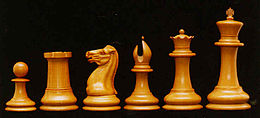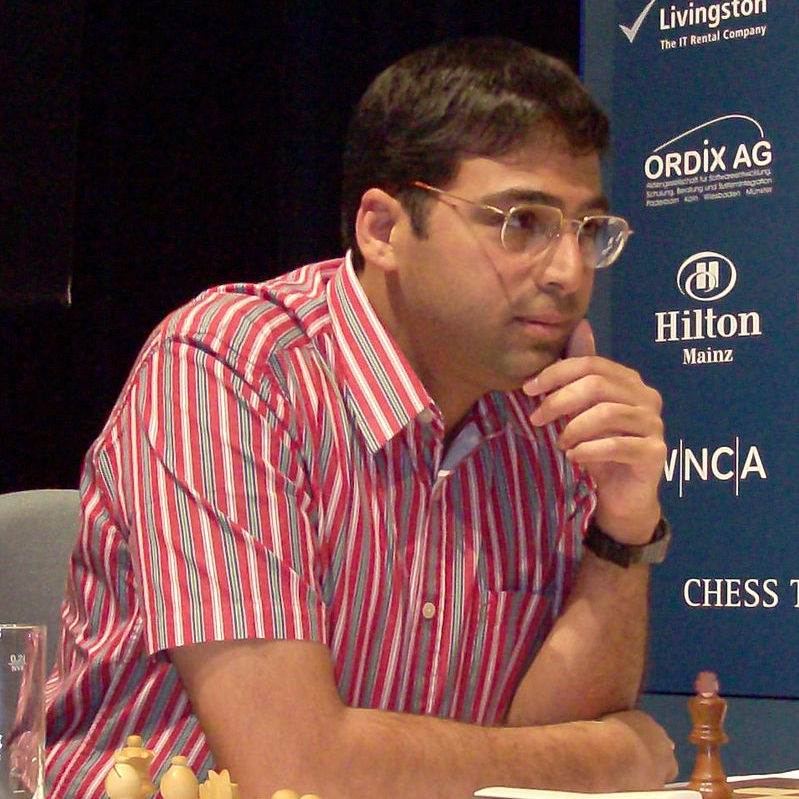Chess is a two-player strategy board game played on a checkered board with 64 squares arranged in an 8×8 grid. The game is played by millions of people worldwide. Chess is believed to be derived from the Indian game chaturanga sometime before the 7th century. Chaturanga is also the likely ancestor of the Eastern strategy games xiangqi, janggi, and shogi. Chess reached Europe by the 9th century, due to the Umayyad conquest of Hispania. The pieces assumed their current powers in Spain in the late 15th century; the modern rules were standardized in the 19th century.
Chess
History
The history of chess goes back almost 1500 years. The game originated in northern India in the 6th century AD and spread to Persia. When the Arabs conquered Persia, chess was taken up by the Muslim world and subsequently, through the Moorish conquest of Spain, spread to Southern Europe.
In Europe, the moves of the pieces changed in the 15th century. The modern game starts with these changes. In the second half of the 19th century, modern tournament play began. Chess clocks were first used in 1883, and the first world chess championship was held in 1886. The 20th century saw advances in chess theory and the establishment of the World Chess Federation (FIDE). Chess engines (programs that play chess), and chess databases became important.
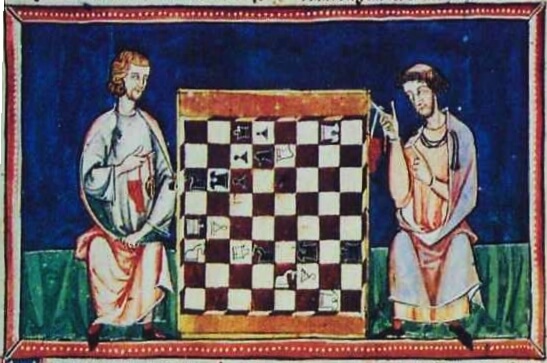
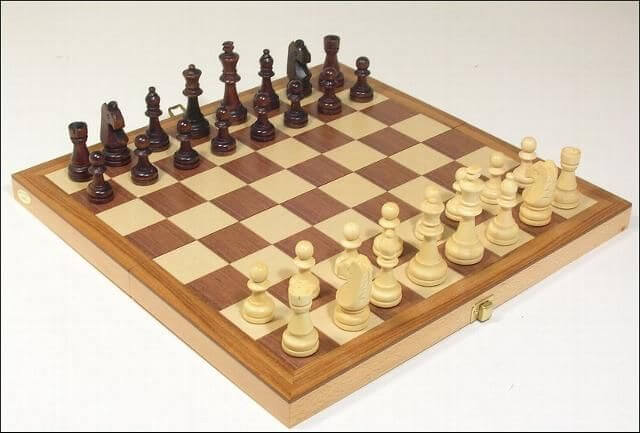
Rules
The rules of chess (also known as the laws of chess) are rules governing the play of the game of chess. While the exact origins of chess are unclear, modern rules first took form during the Middle Ages. The rules continued to be slightly modified until the early 19th century when they reached essentially their current form. The rules also varied somewhat from place to place. Today, the standard rules are set by FIDE (Fédération Internationale des Échecs), the international governing body for chess. Slight modifications are made by some national organizations for their own purposes. There are variations of the rules for fast chess, correspondence chess, online chess, and Chess960.
Chess is a two-player board game utilizing a chessboard and sixteen pieces of six types for each player. Each type of piece moves in a distinct way. The goal of the game is to checkmate (threaten with inescapable capture) the opponent’s king. Games do not necessarily end in checkmate; players often resign if they believe they will lose. A game can also end in a draw in several ways.
Besides the basic moves of the pieces, rules also govern the equipment used, time control, conduct and ethics of players, accommodations for physically challenged players, and recording of moves using chess notation. Procedures for resolving irregularities that can occur during a game are provided as well.
Chess is played on a chessboard, a square board divided into 64 squares (eight-by-eight) of alternating color, which is similar to that used in draughts (checkers) (FIDE 2008). No matter what the actual colors of the board, the lighter-colored squares are called “light” or “white”, and the darker-colored squares are called “dark” or “black”. Sixteen “white” and sixteen “black” pieces are placed on the board at the beginning of the game. The board is placed so that a white square is in each player’s near-right corner. Horizontal rows are called ranks and vertical rows are called files.
Each player controls sixteen pieces:
| Piece | King | Queen | Rook | Bishop | Knight | Pawn |
|---|---|---|---|---|---|---|
| Number | 1 | 1 | 2 | 2 | 2 | 8 |
| Symbols |
At the beginning of the game, the pieces are arranged as shown in the diagram: for each side one king, one queen, two rooks, two bishops, two knights, and eight pawns. The pieces are placed, one on a square, as follows:
- The rooks are placed on the outside corners, right and left edge.
- The knights are placed immediately inside of the rooks.
- The bishops are placed immediately inside of the knights.
- The queen is placed on the central square of the same color of that of the player: white queen on the white square and black queen on the black square.
- The king takes the vacant spot next to the queen.
- The pawns are placed one square in front of all of the other pieces.
Popular mnemonics used to remember the setup are “queen on her own color” and “white on right”. The latter refers to setting up the board so that the square closest to each player’s right is white (Schiller 2003:16–17).
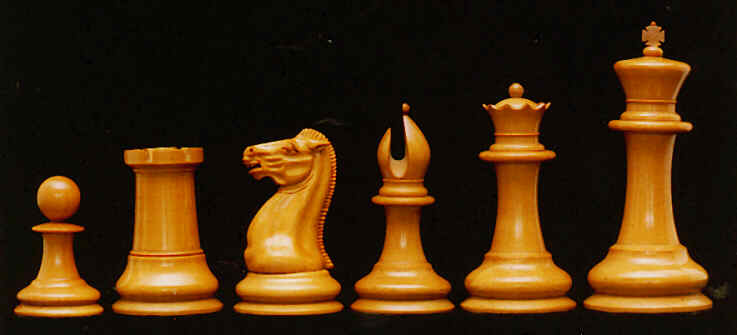
Equipment
Pieces of the Staunton chess set design are the standard and are usually made of wood or plastic. They are often black and white; other colors may be used (like a dark wood or even red for the dark pieces) but they would still be called the “white” and “black” pieces (see White and Black in chess). The height of the king should be 85 to 105 millimetres (3.35–4.13 inches). A height of approximately 95 to 102 mm (3 3⁄4–4 inches) is preferred by most players. The diameter of the king should be 40 to 50% of its height. The size of the other pieces should be in proportion to the king. The pieces should be well balanced (Just 2014).
In games subject to time control, a chess clock is used, consisting of two adjacent clocks and buttons to stop one clock while starting the other, such that the two component clocks never run simultaneously. The clock can be analog or digital through a digital clock is highly preferred under both USCF and FIDE rulesets. This is since most tournaments now include either a time delay (a countdown to when a clock starts again) or add (extra time being added prior or after the move) to their time controls. Before the start of the game, either the arbiter decides, or whoever is playing Black, where the chess clock is placed.

